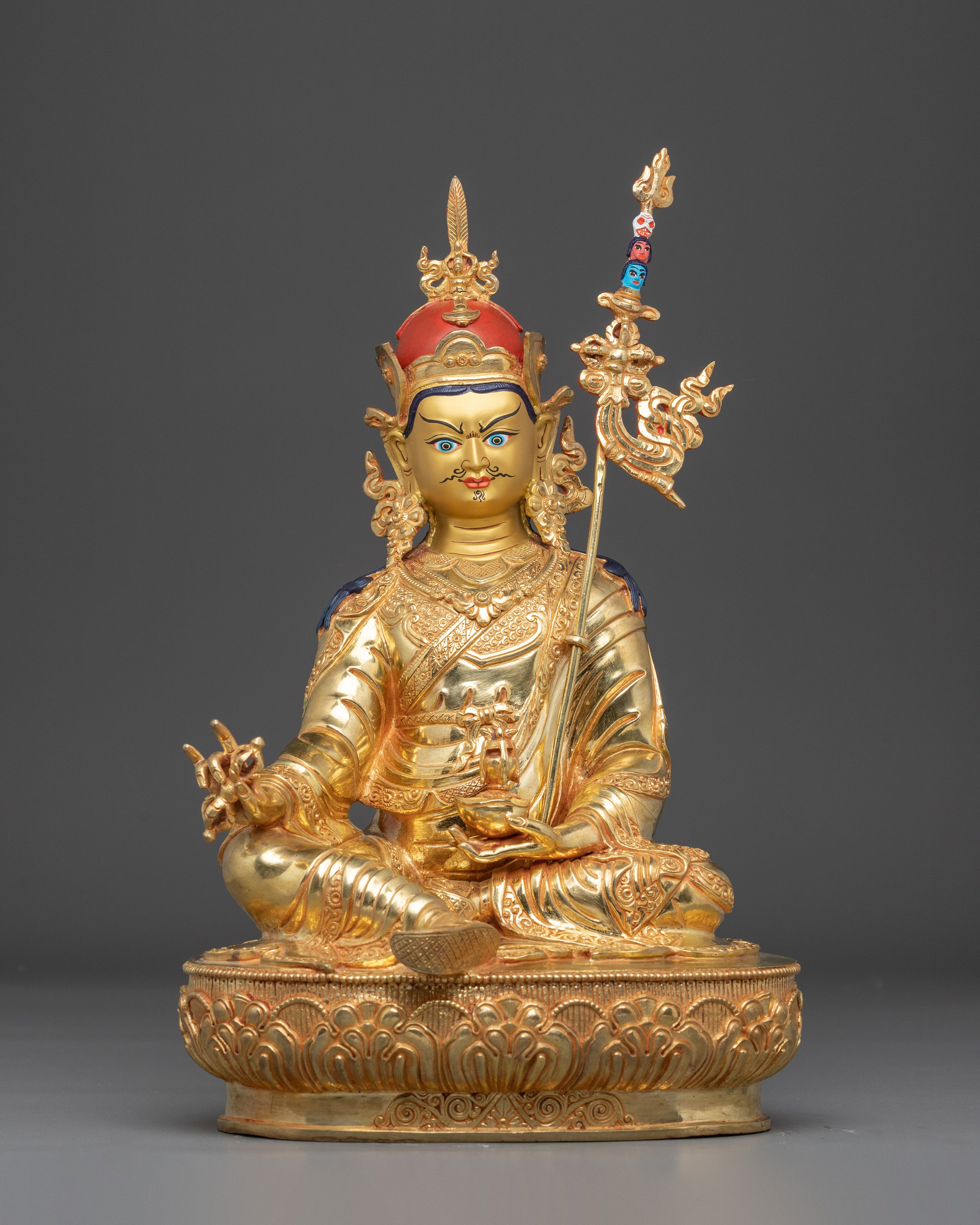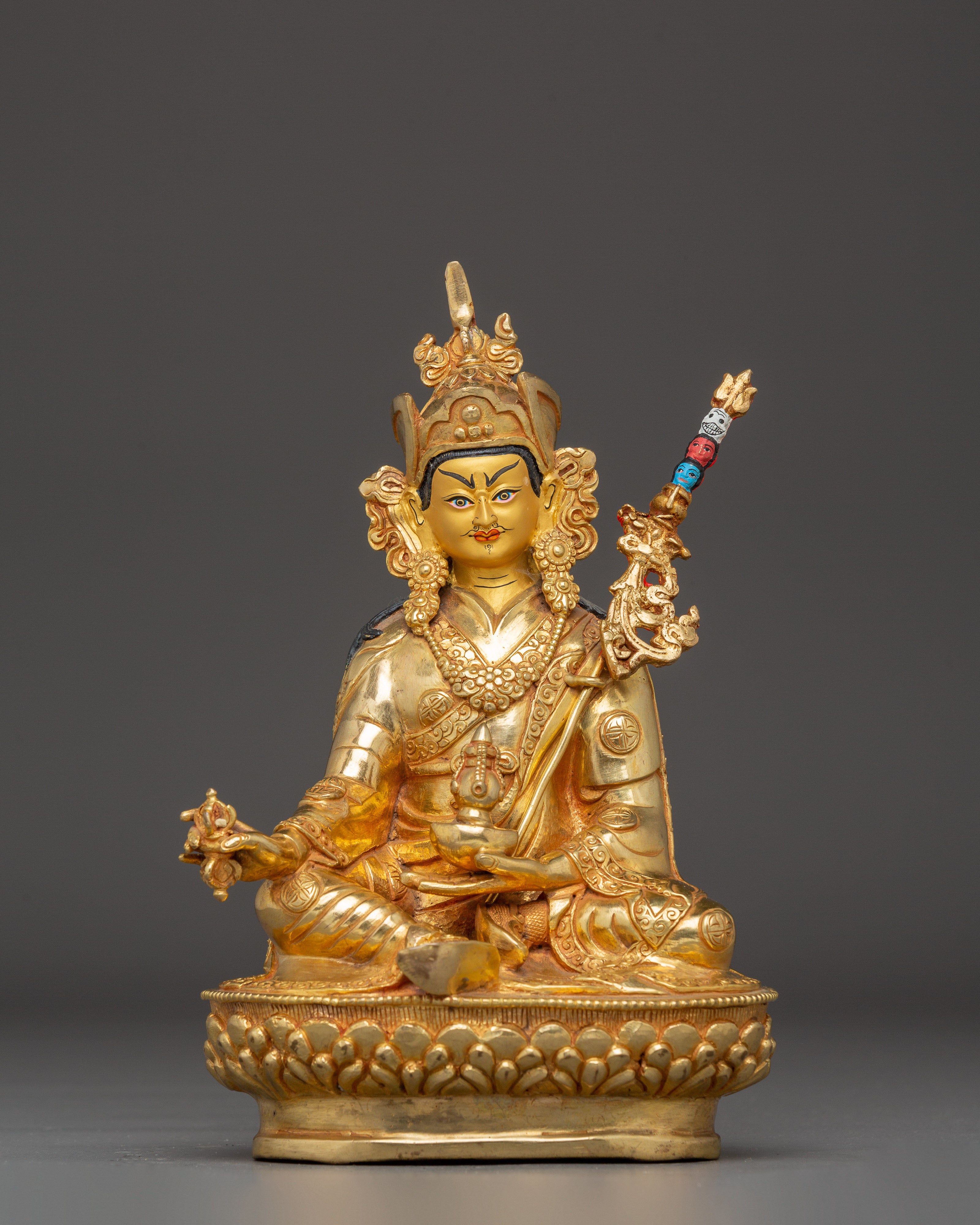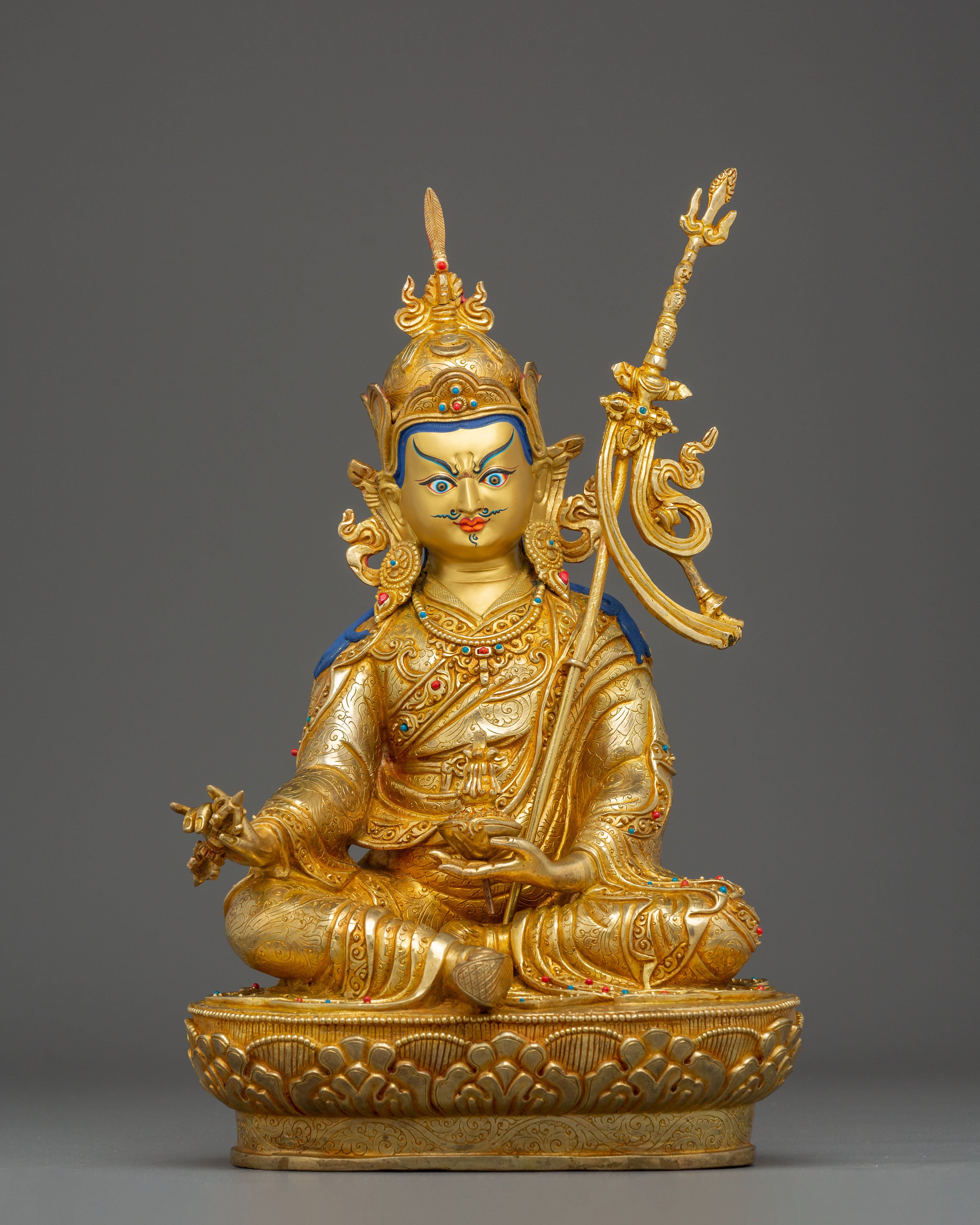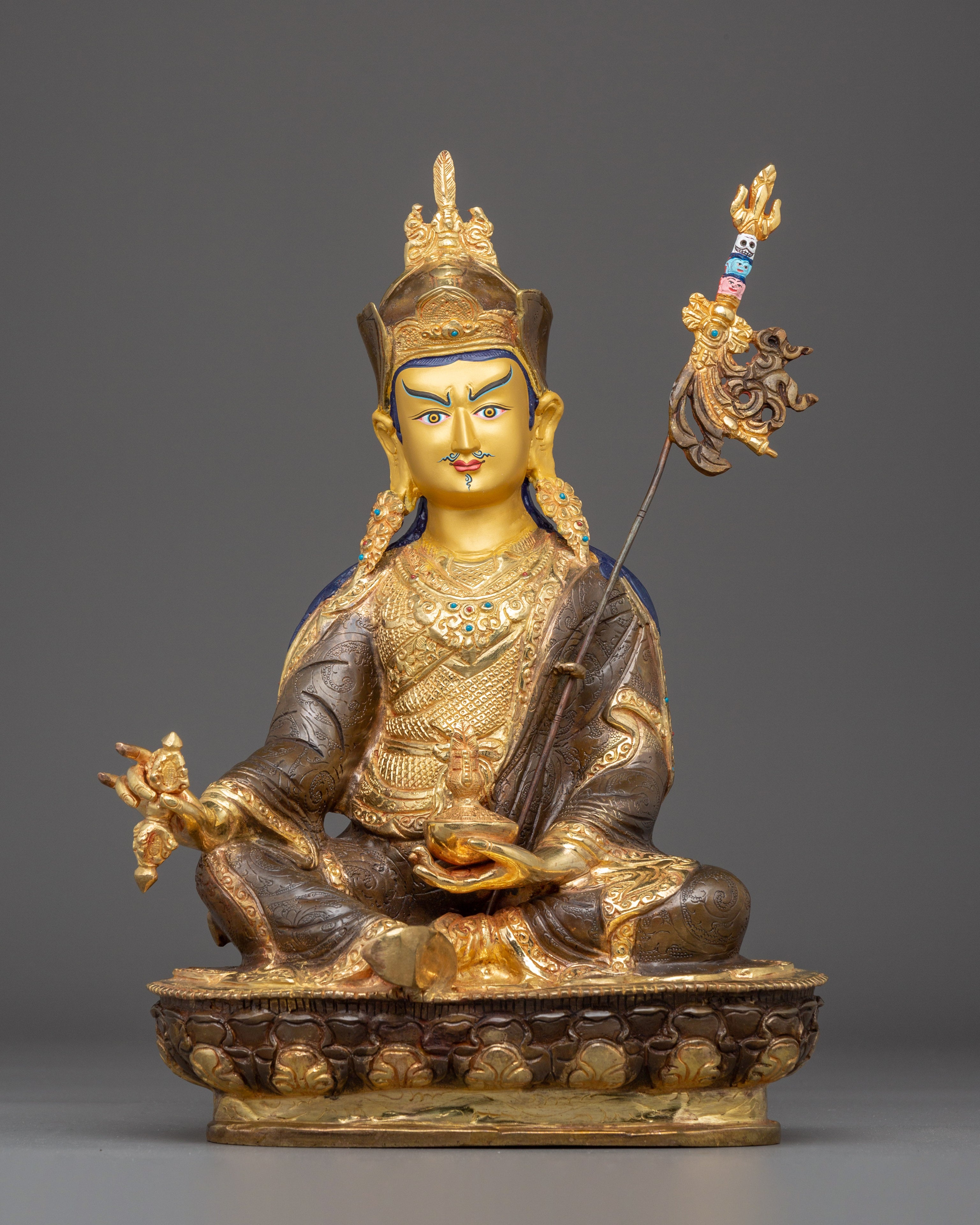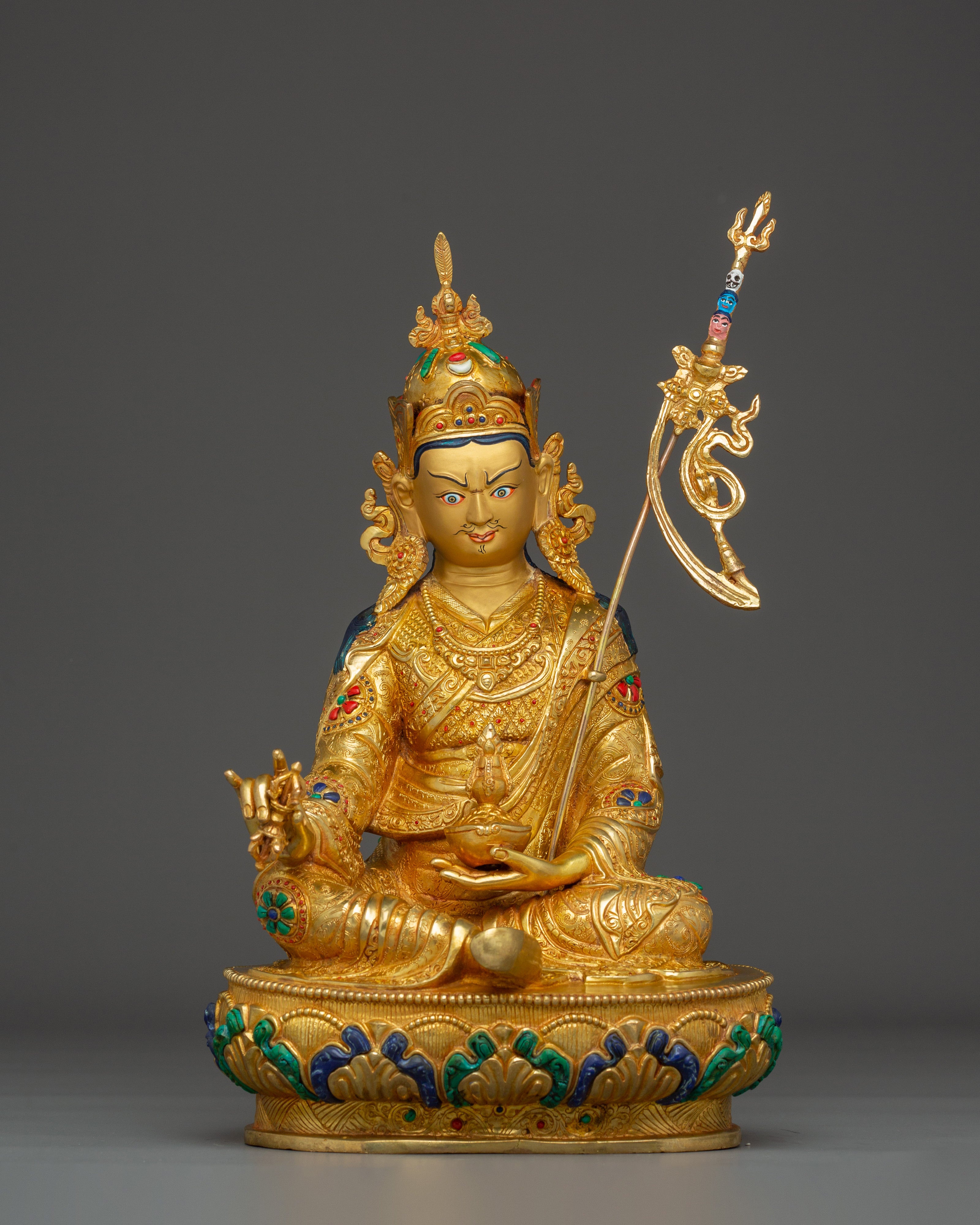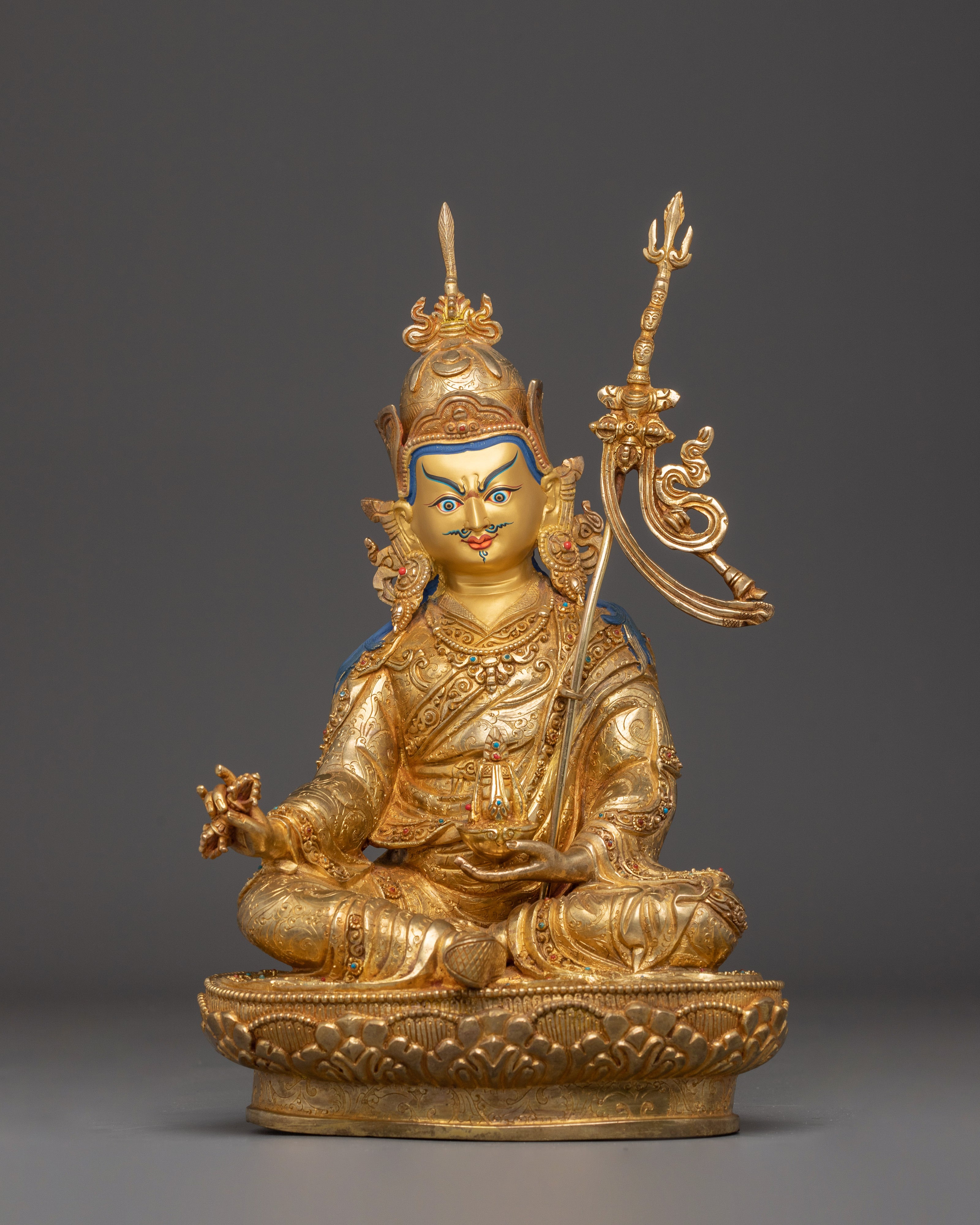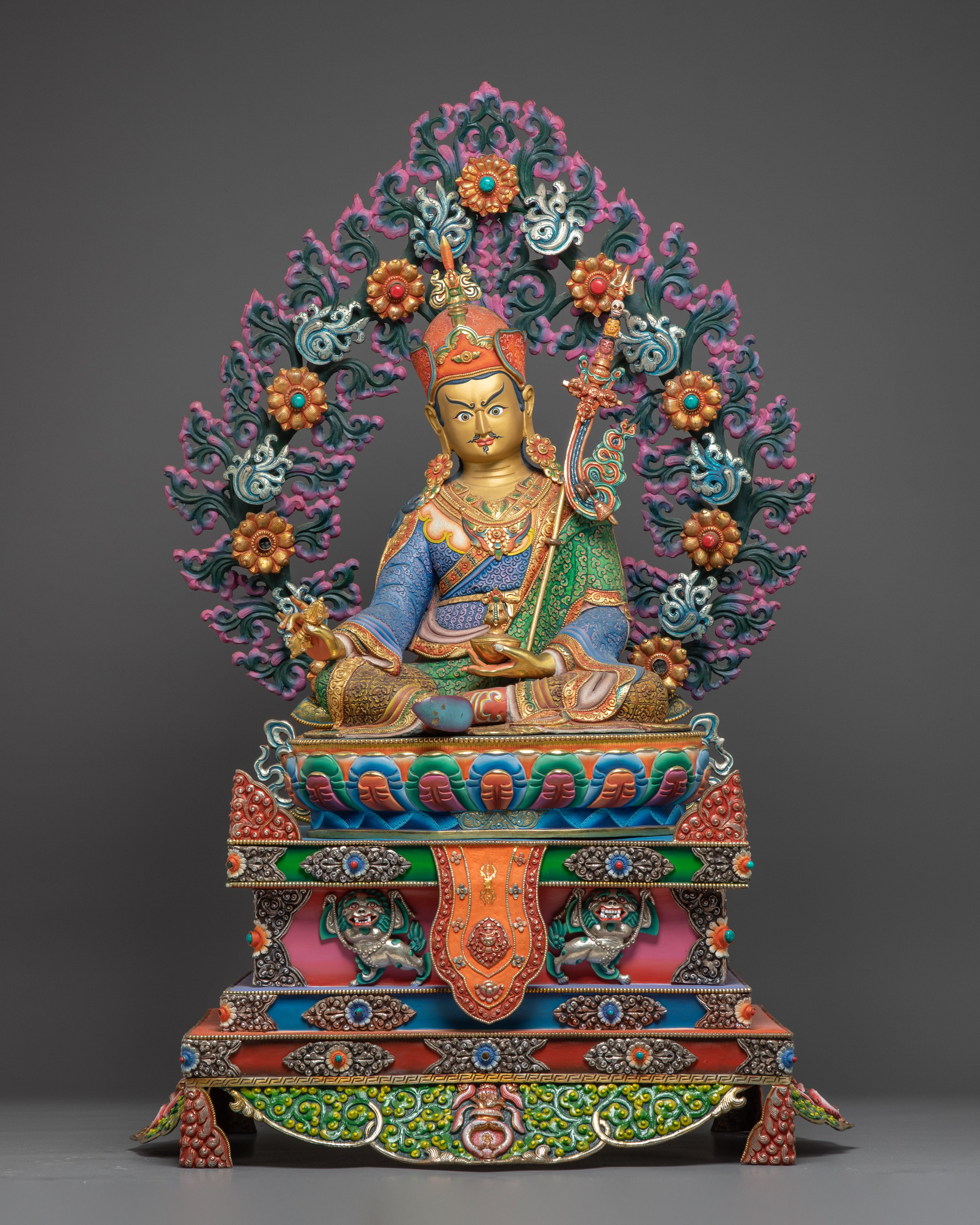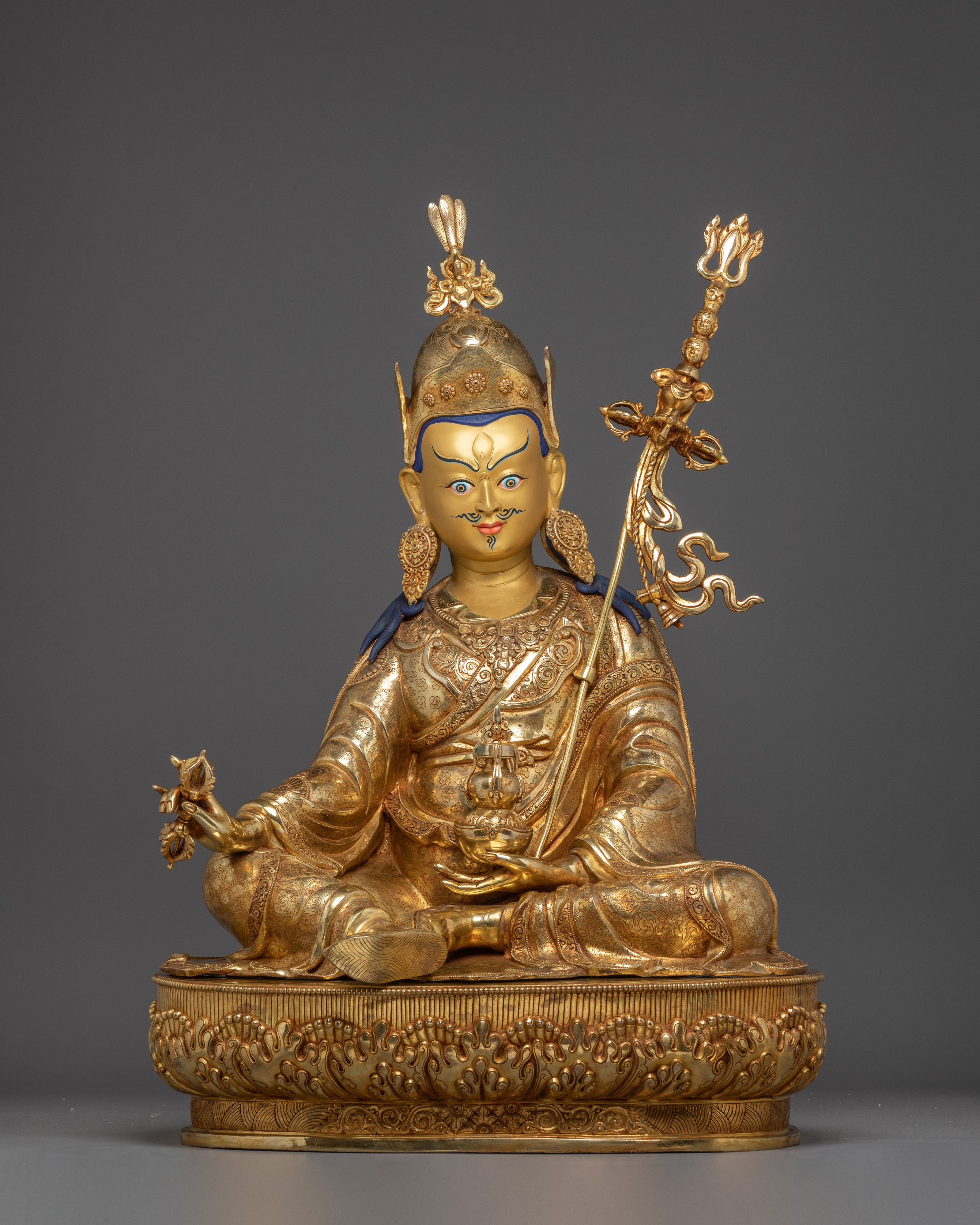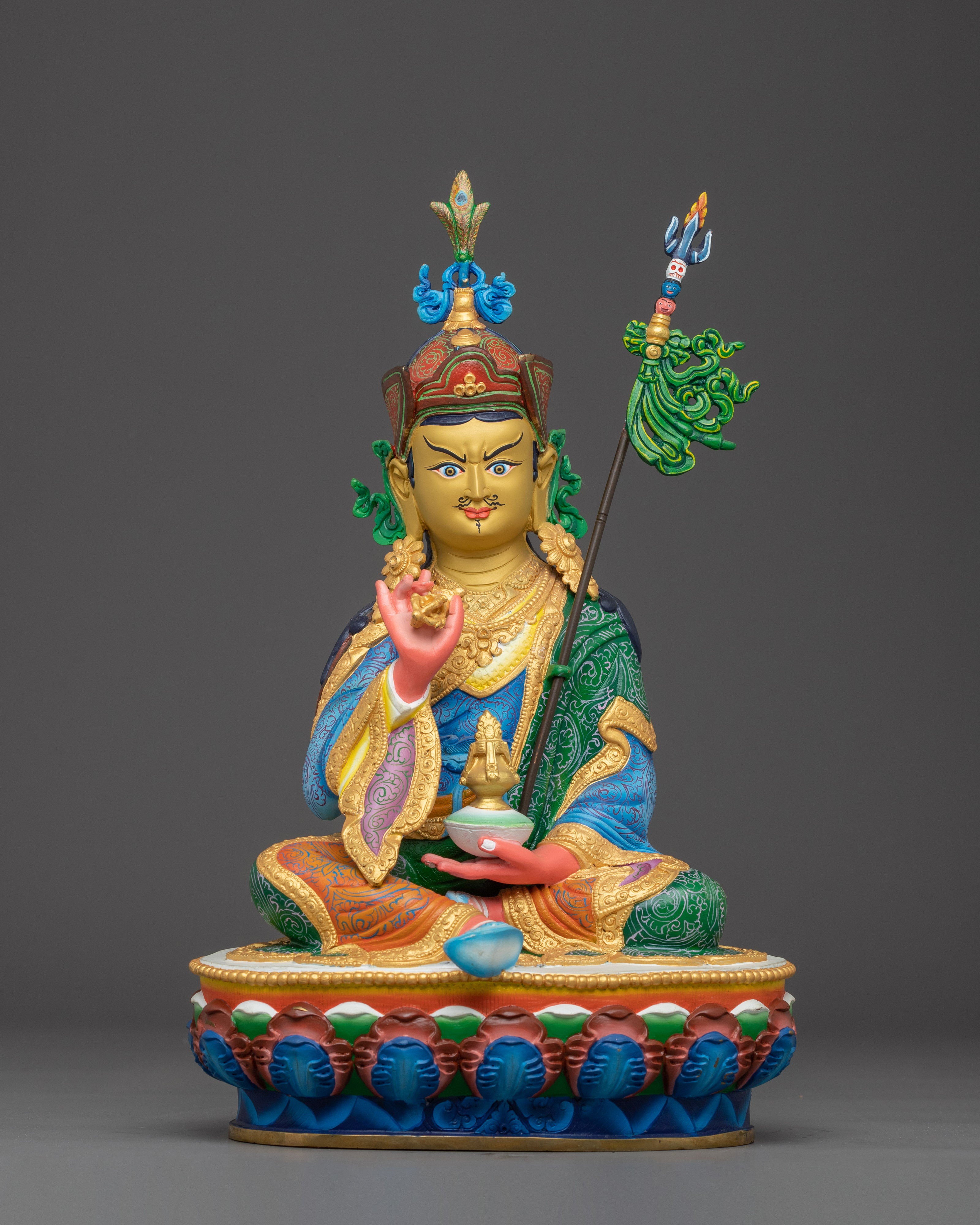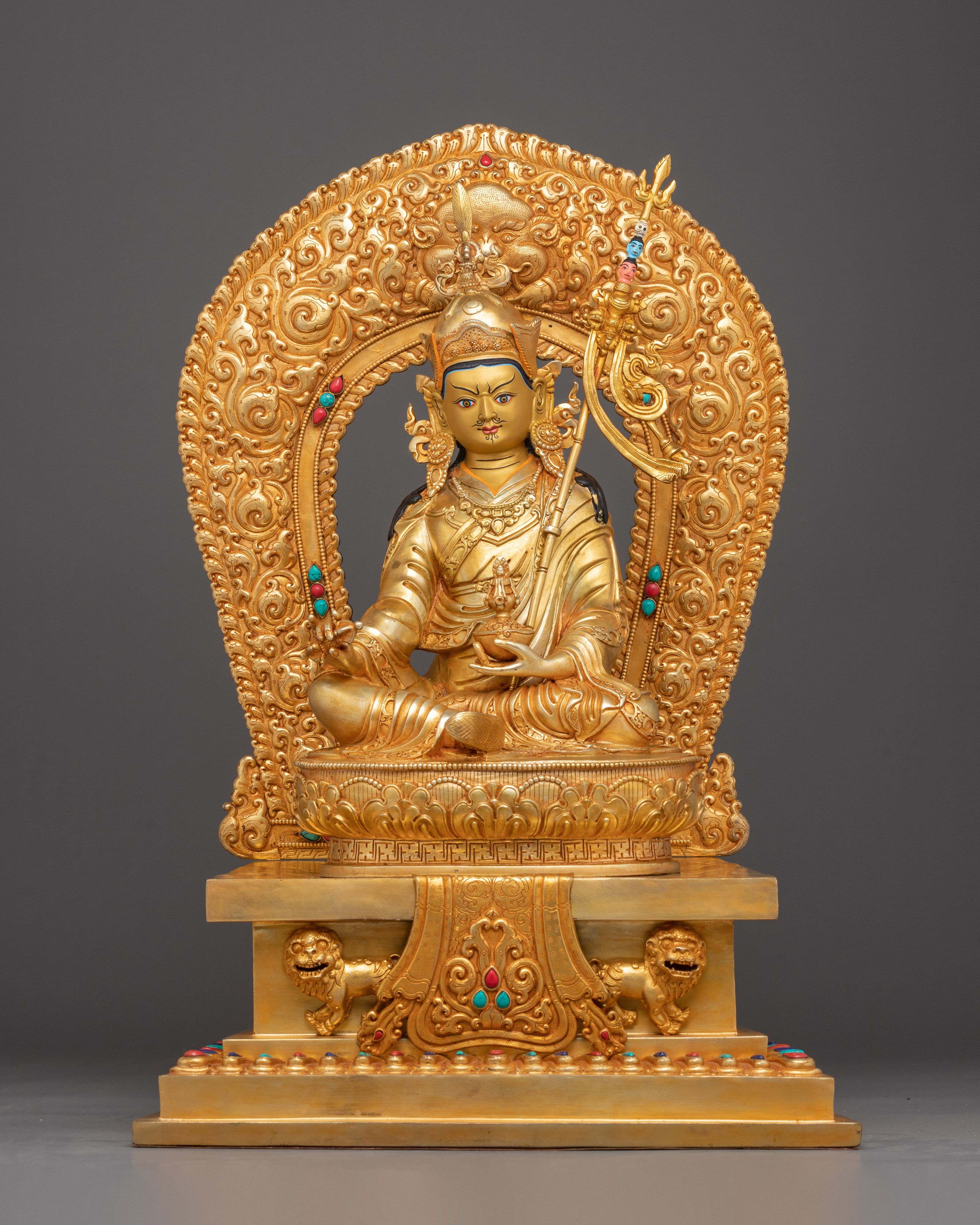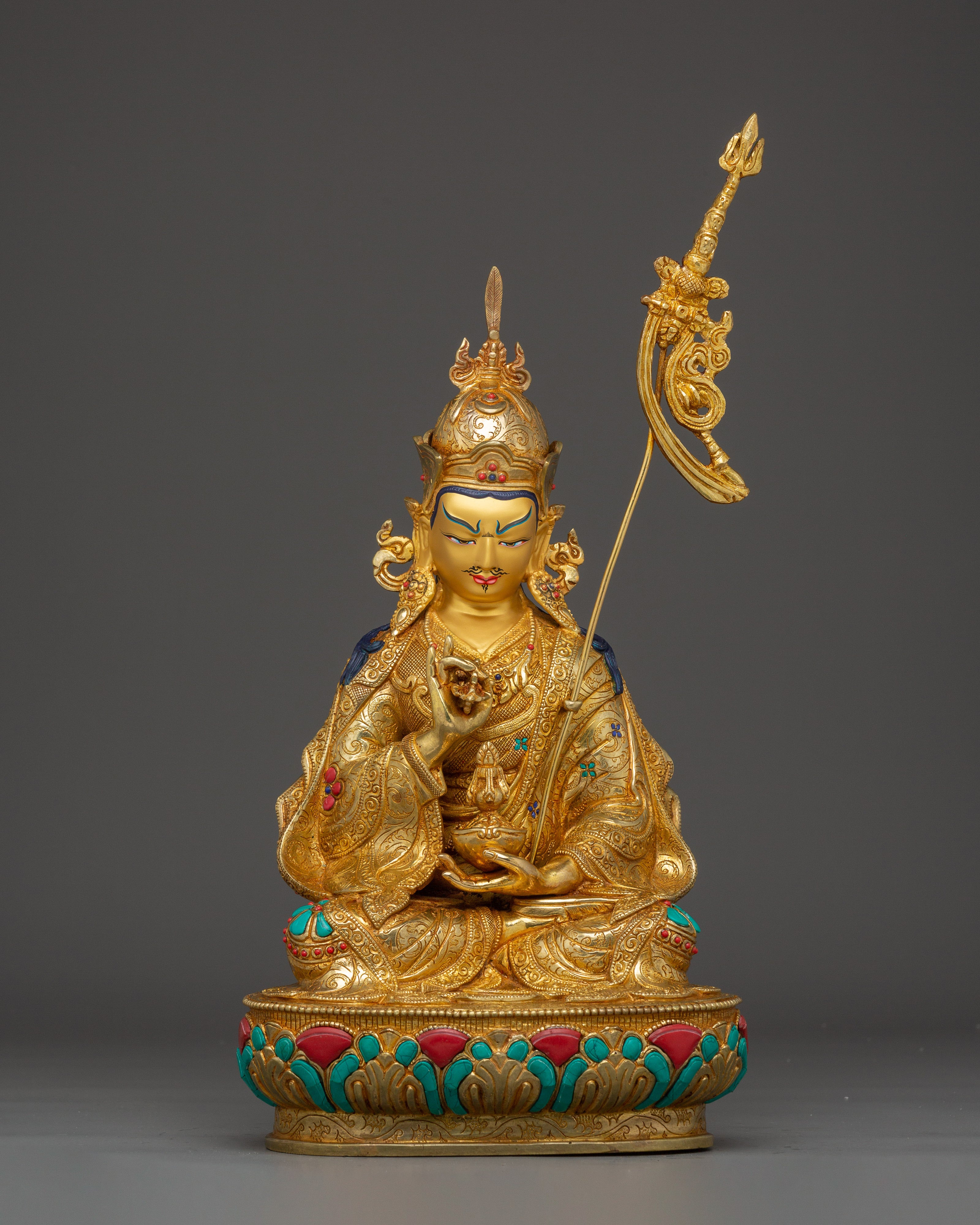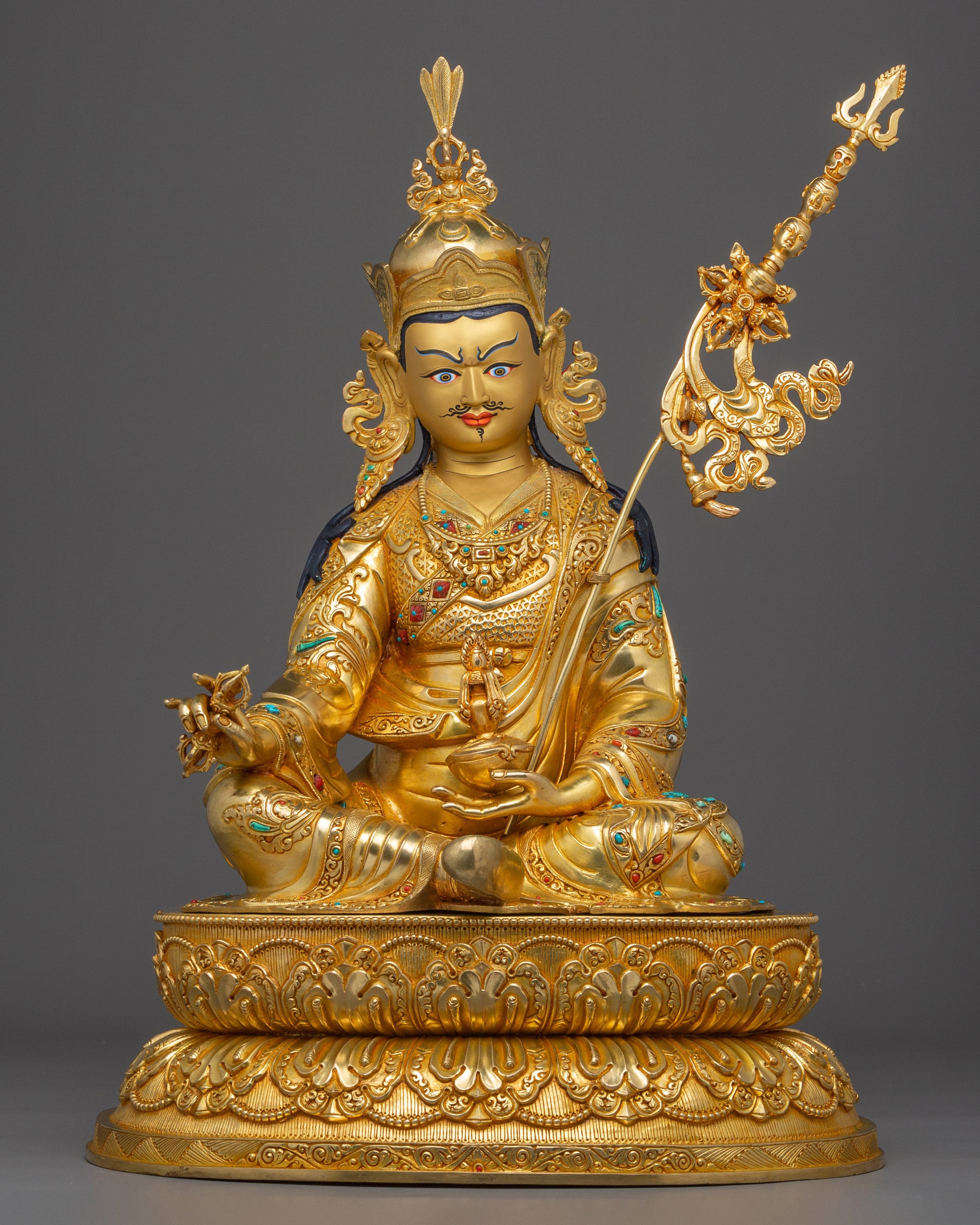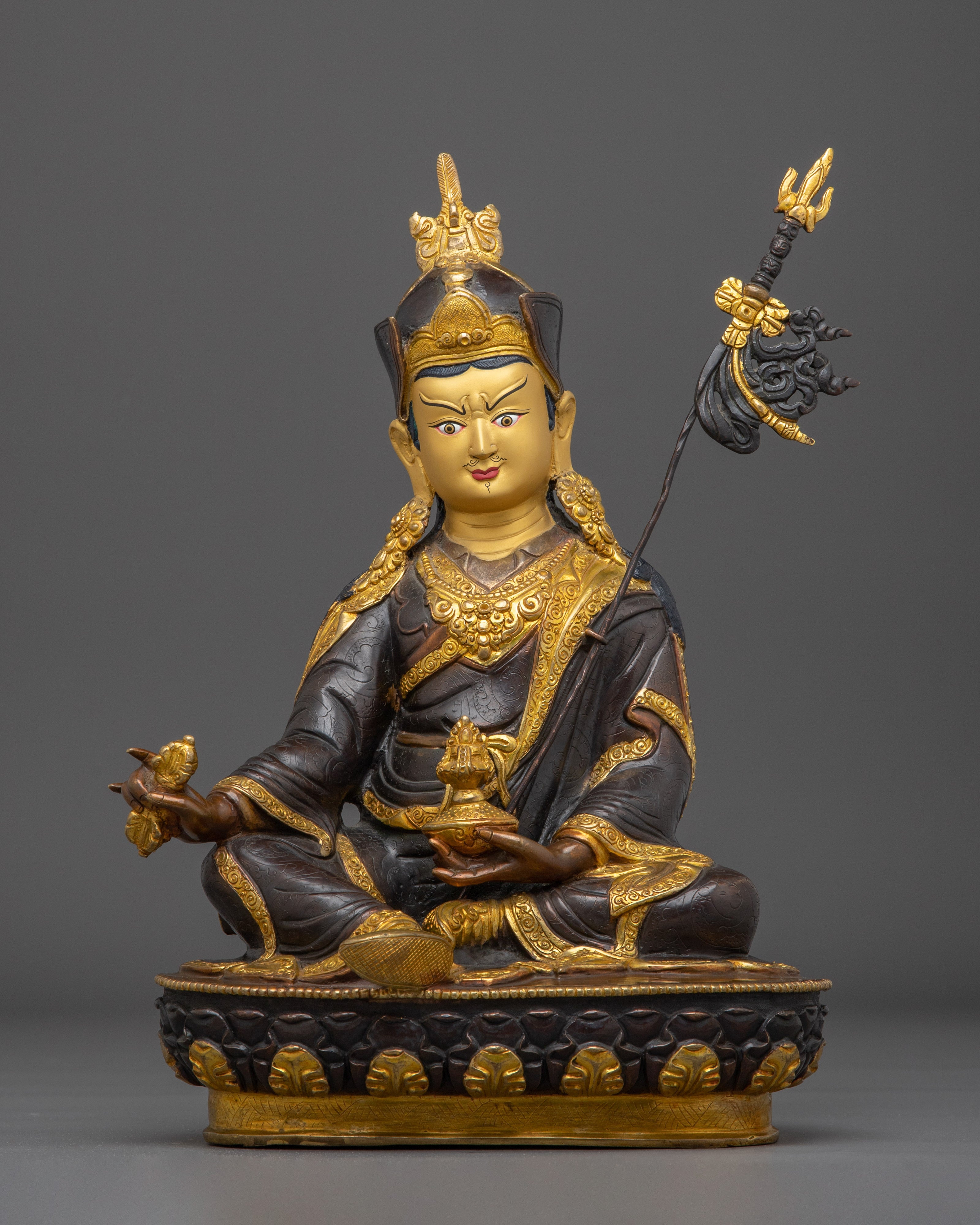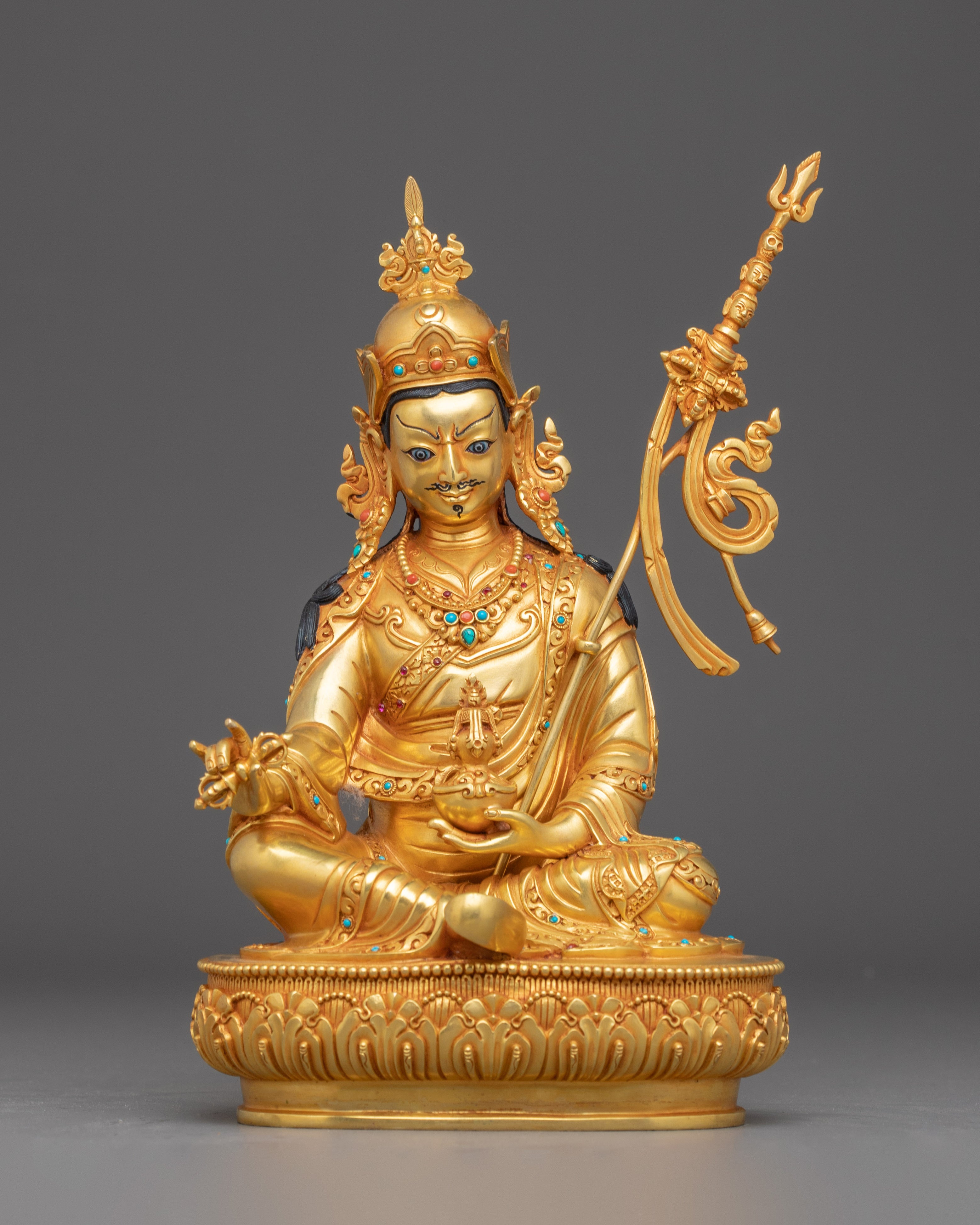Guru Rinpoche Statue Collection
702 products
Showing 1 - 24 of 702 products

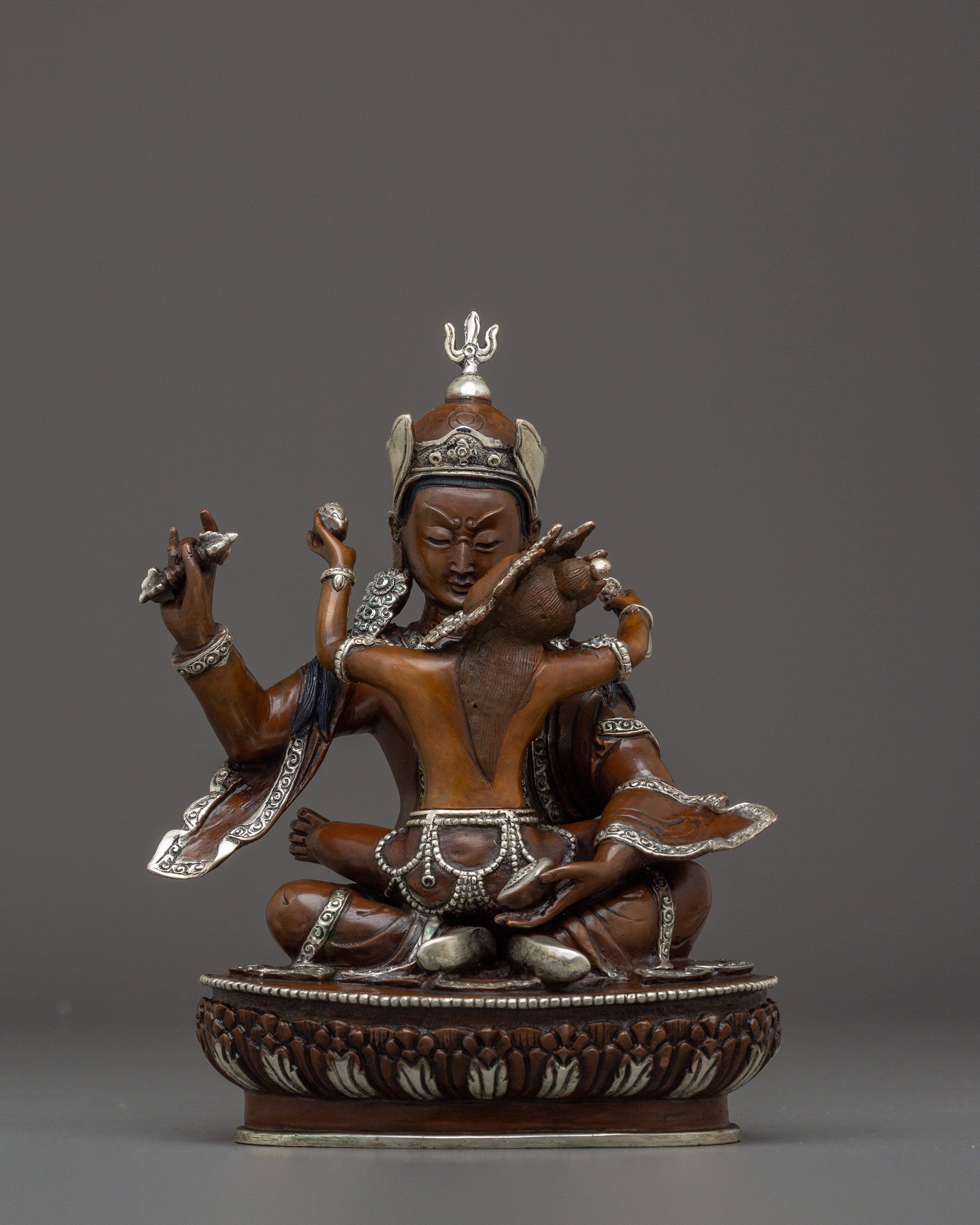

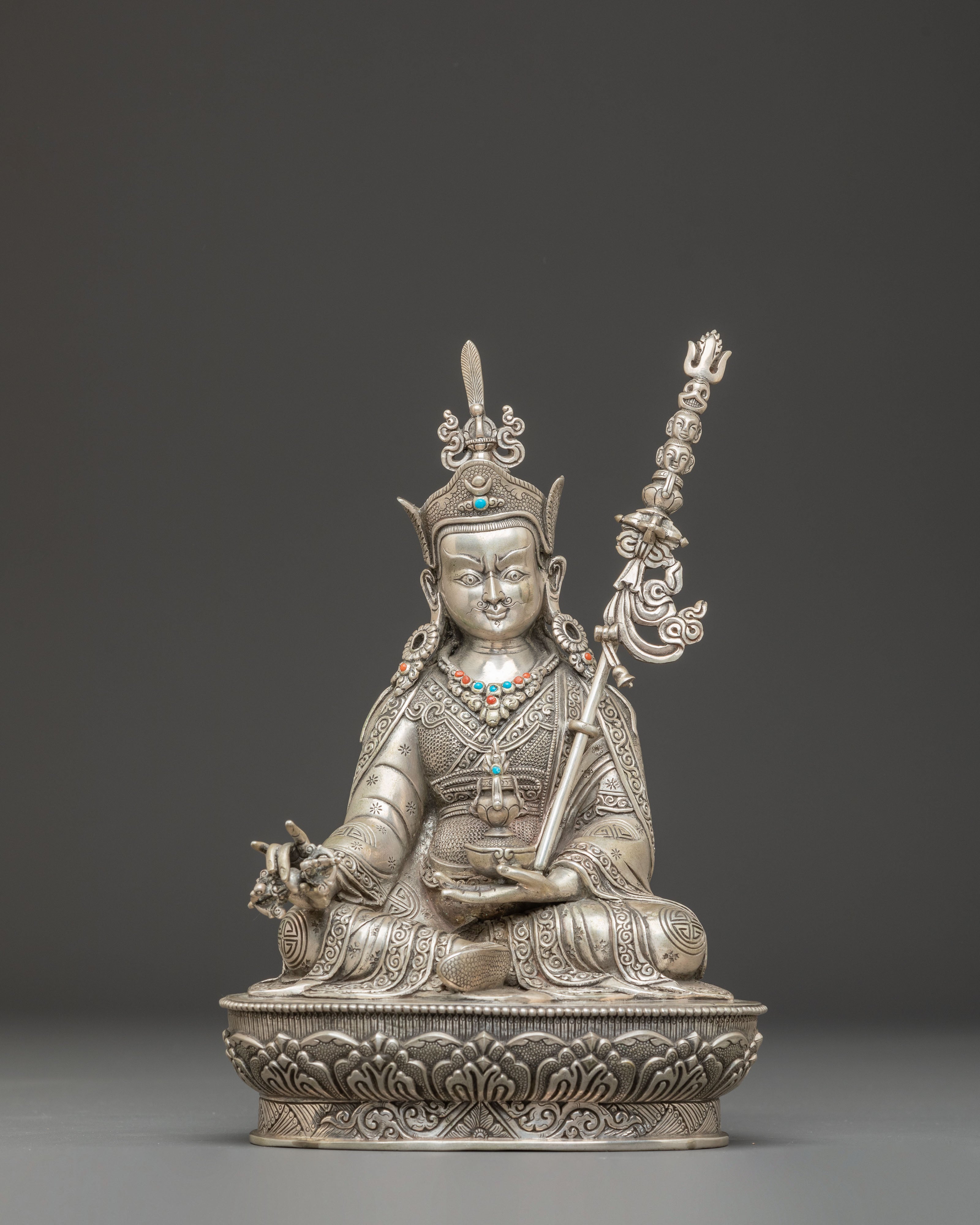

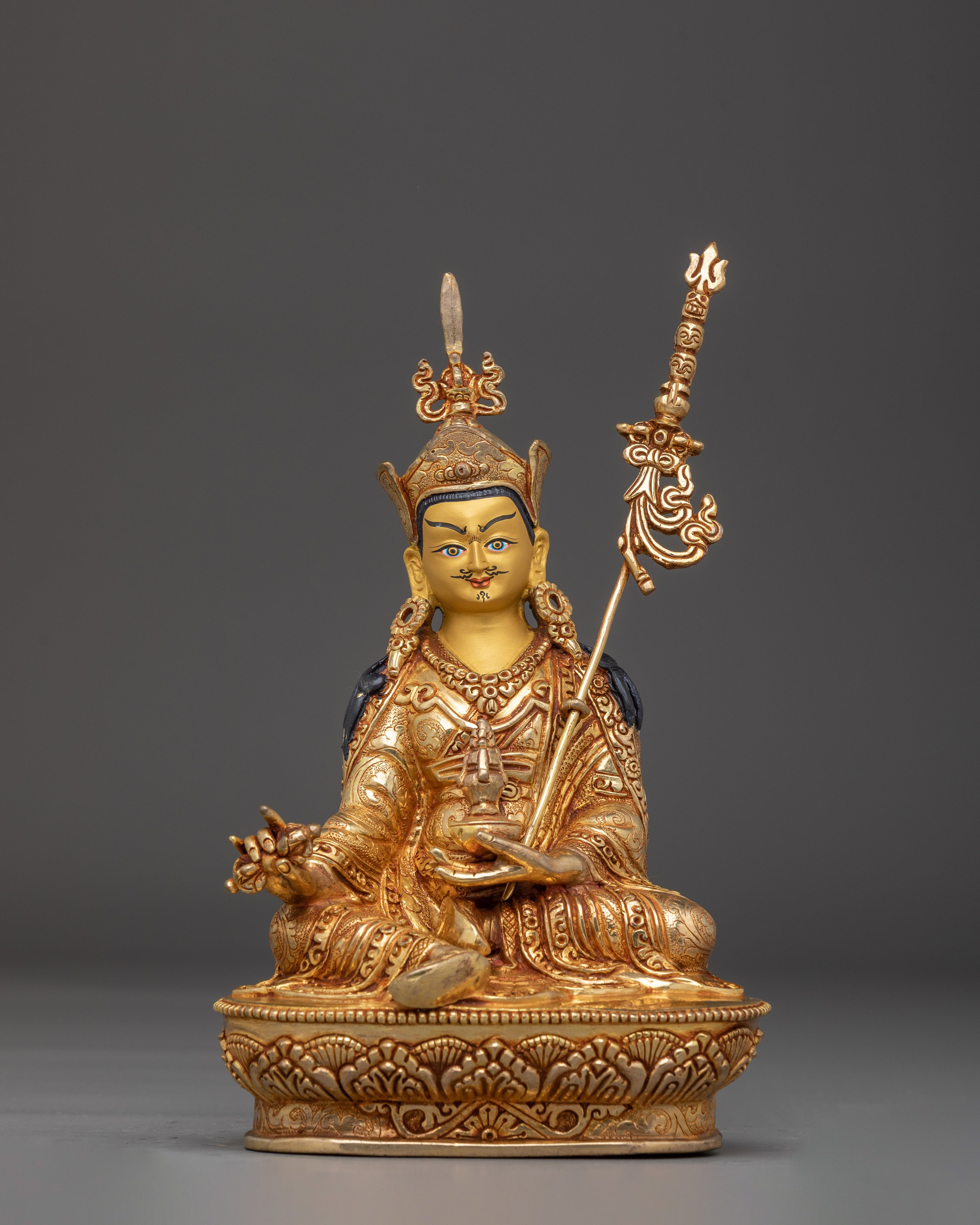



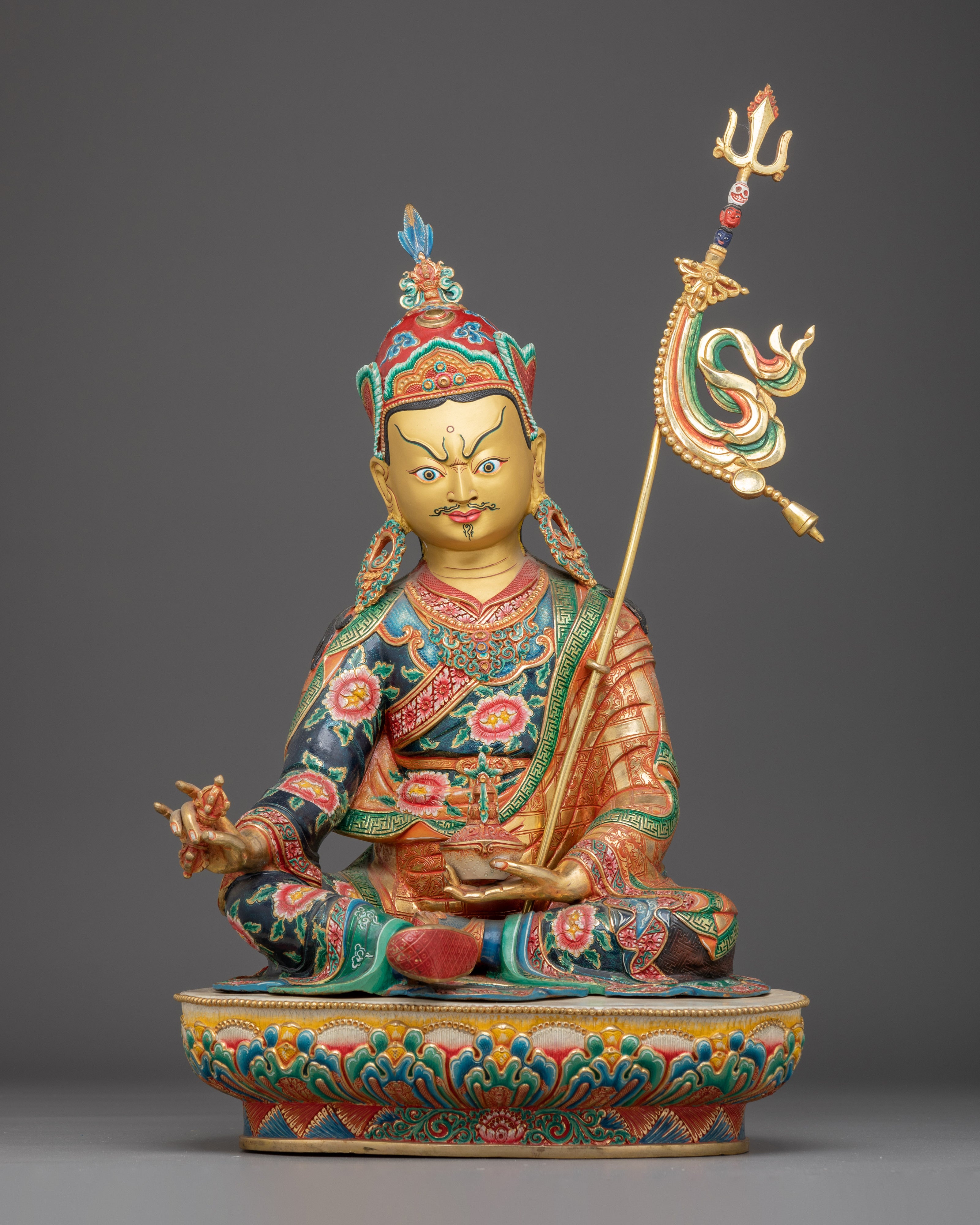

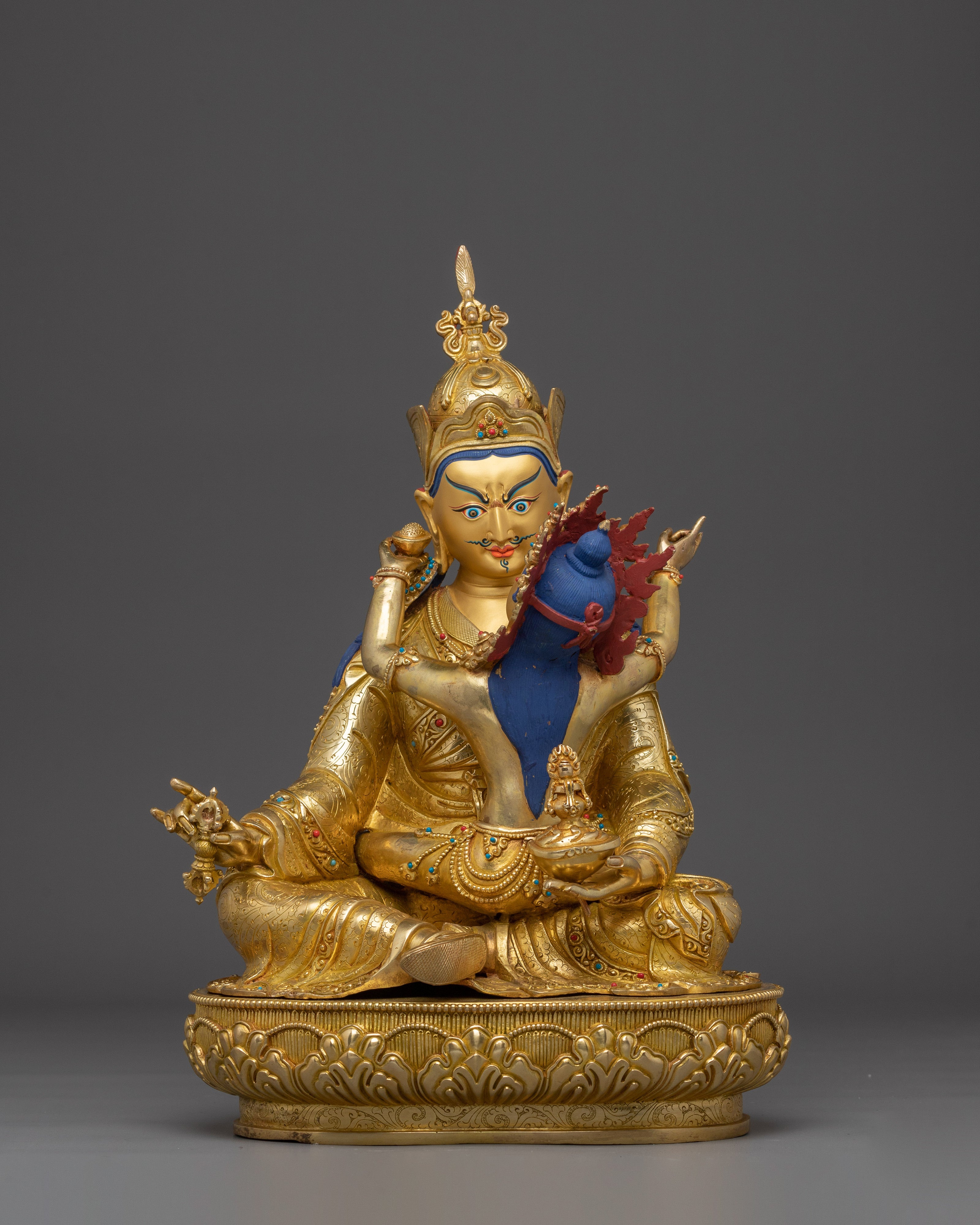

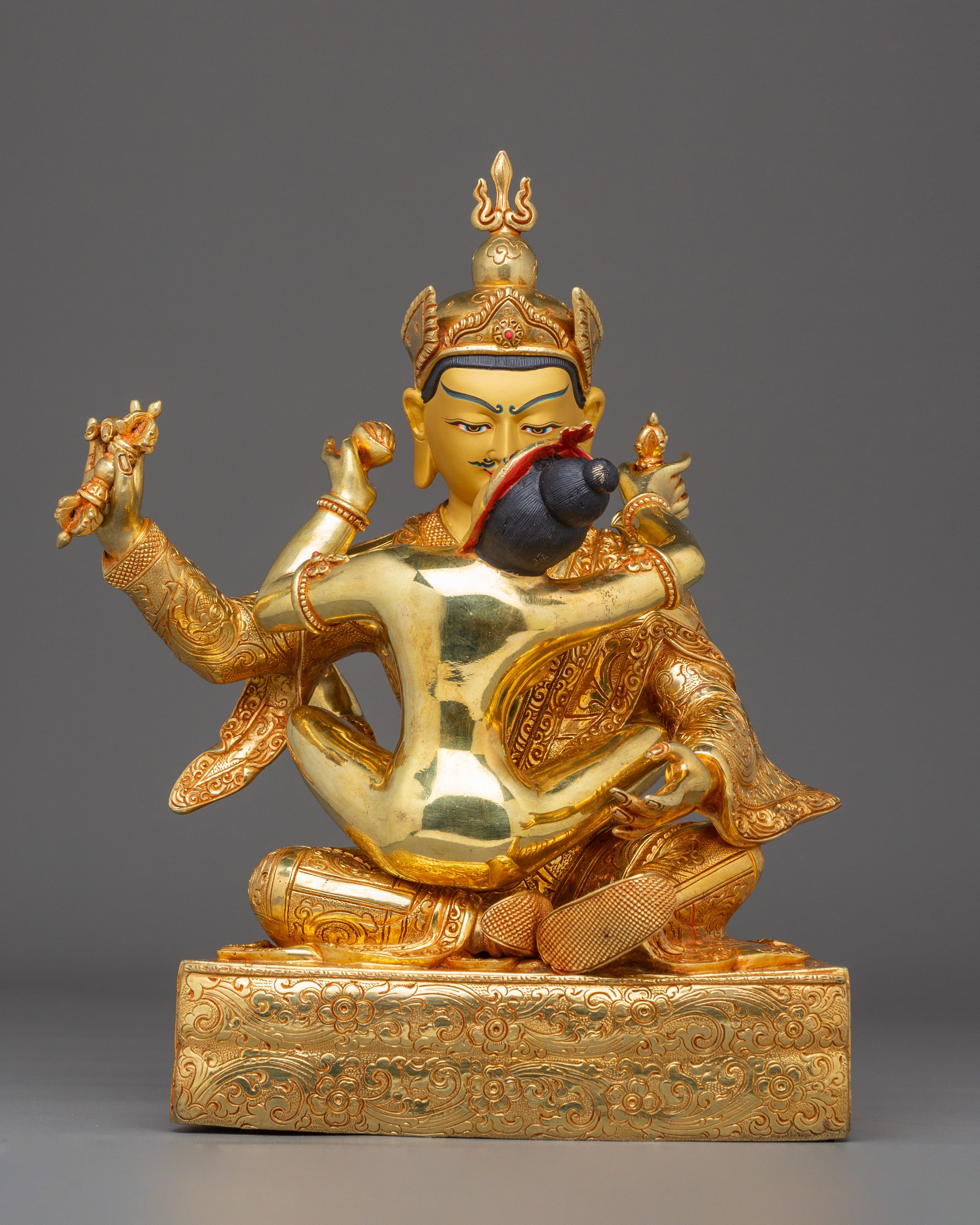

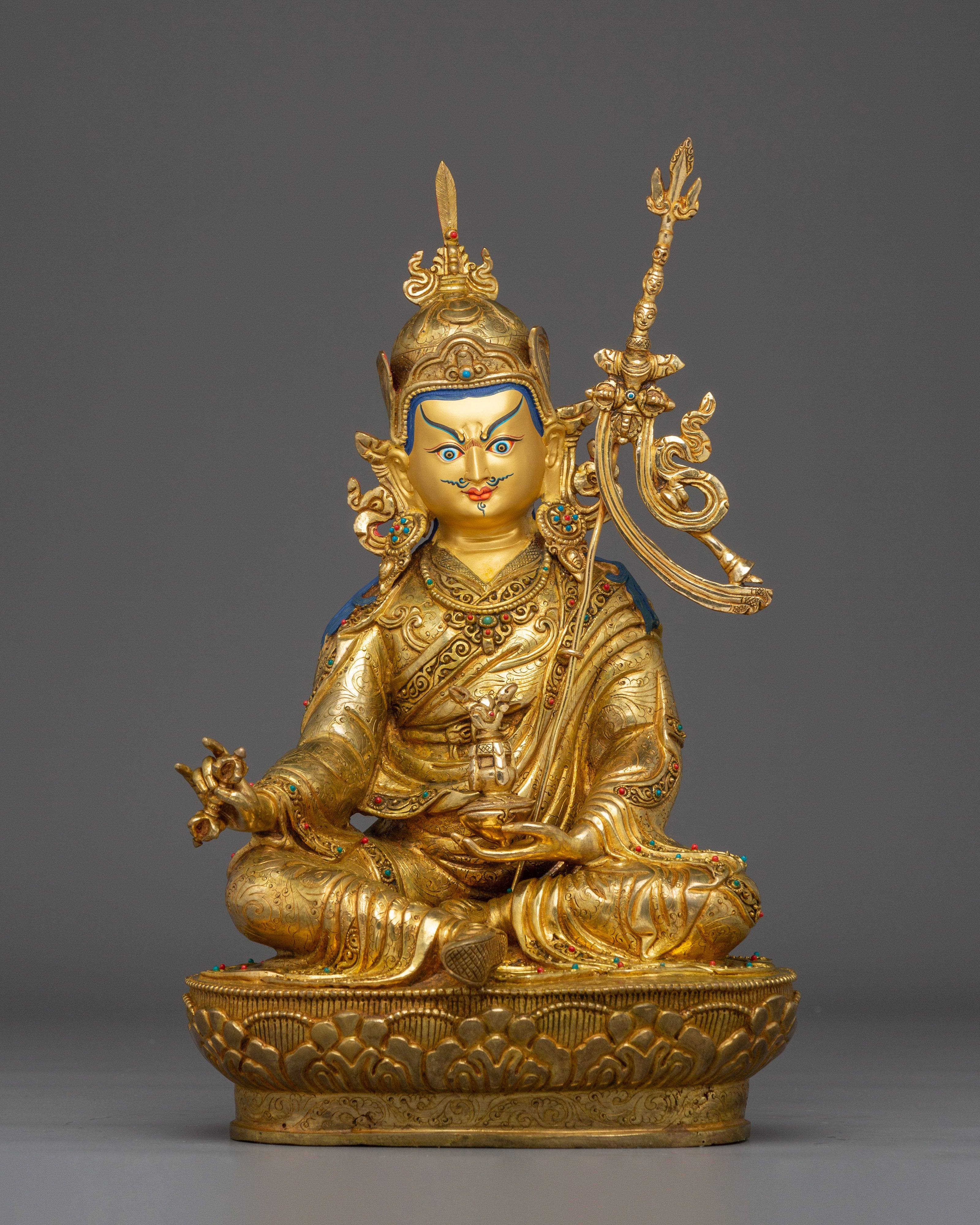

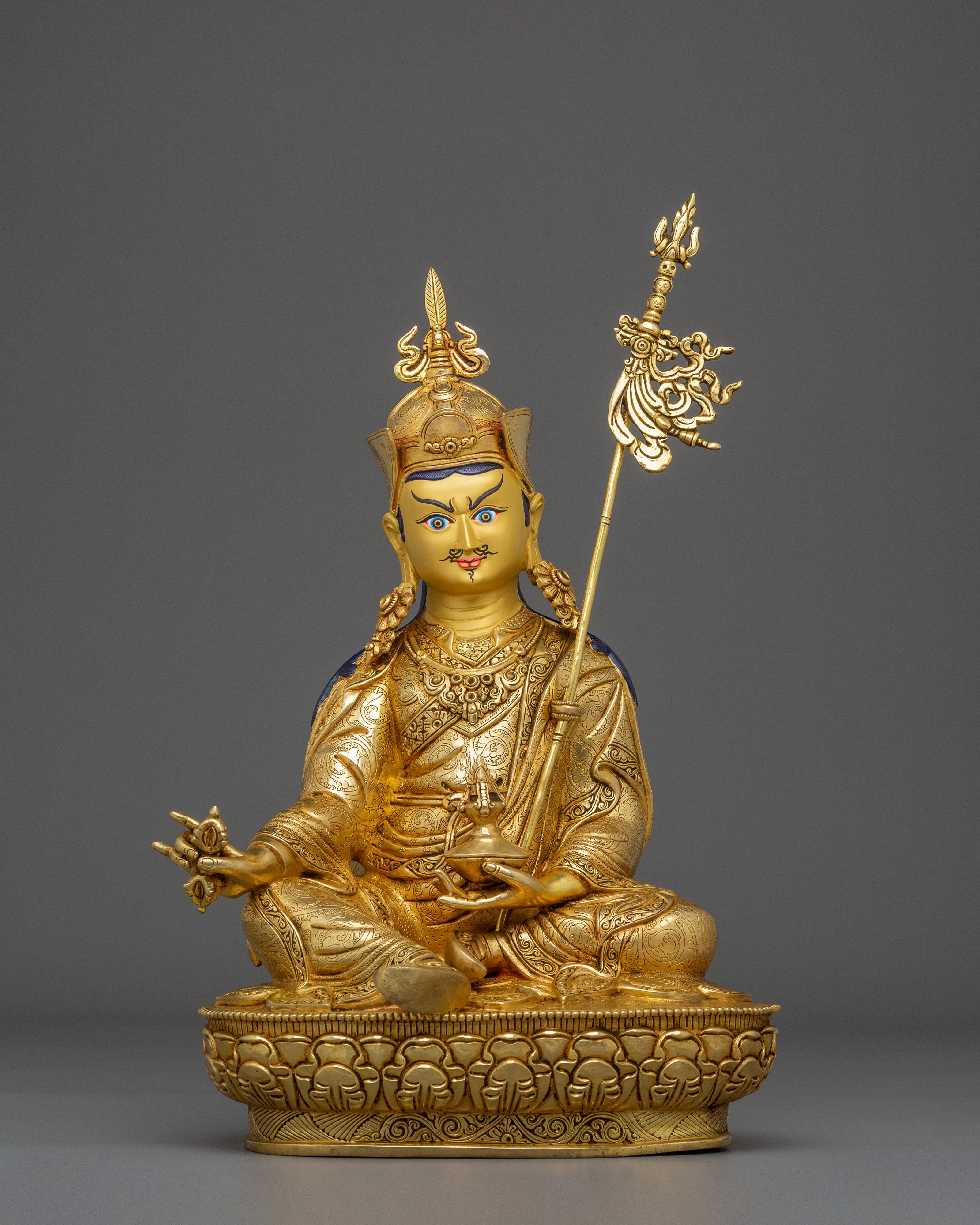
Precious Guru Padmasambhava: The Founder of Tibetan Buddhism
Guru Rinpoche, often known as Padmasambhava, meaning "Lotus-Born," is said to have been miraculously born in the ancient kingdom of Oddiyana, appearing as an eight-year-old child on a lotus in Lake Dhanakosha. Recognized as an enlightened being, he was later adopted by the local king before renouncing royal life to pursue profound spiritual practice.
Our Guru Rinpoche Statue Collection – Authentic Hand-Carved Treasures from Nepal
-
Hand-Carved Excellence: Each statue is meticulously hand-carved by skilled Nepali artisans with deep knowledge of Buddhist iconography and traditional craftsmanship.
-
Accurate Iconography: Every detail—from Guru Rinpoche’s lotus hat to his ritual implements—is rendered according to classical Vajrayana artistic standards, ensuring spiritual integrity.
-
Gold Plated Finishes: Select statues feature exquisite gold plating, enhancing their sacred beauty and making them perfect as precious gifts or ritual centerpieces.
-
Sizes and Price Range: Available in diverse sizes from intimate desktop statues to grand altar icons, catering to various budgets and spaces.
Attributes and Iconography in Statue:
Depending on the particular facet of his practice, Guru Rinpoche is usually portrayed as a transcendent character who appears serene or wrathful.
- Posture: Guru Rinpoche is usually portrayed sitting in a regal position, referred to as the "posture of royal ease," which signifies his control and authority in the spiritual domain.
- Attire: In terms of clothing, he is frequently illustrated in a combination of monastic and royal attire, representing his dual roles as a spiritual guide and a prince. This ensemble typically features a monk's robe, a gown for tantric practices, and a royal cloak.
- Vajra (Dorje): In his right hand, he holds a five-pronged vajra at heart level, symbolizing his unwavering compassion and the indestructible essence of his enlightened mind.
- Skull Cup (Kapala): His left hand is positioned in a gesture of equanimity, cradling a skull cup filled with the nectar of immortality, which signifies the transformation of negative forces into wisdom.
- Khatvanga: Leaning against his left shoulder is the Khatvanga, a trident staff embellished with three severed heads—fresh, decaying, and skeletal—representing the transcendence of the three bodies (kayas): the dharmakaya, sambhogakaya, and nirmanakaya. The Khatvanga is also decorated with a sash of rainbow-colored silk, symbolizing the pure lights of the Mahabuddha.
- Lotus Hat: He wears a unique lotus hat with five petals, each representing the five wisdoms, and adorned with a sun and moon, which signify skillful means and wisdom. A vulture feather atop the hat represents the realization of the highest view.
Why Choose a Nepalese Hand-Carved Guru Padmasambhava Statue?
-
Authenticity: Nepali artisans preserve centuries-old carving techniques that honor Buddhist tradition.
-
Spiritual Power: Correct iconography helps invoke Guru Rinpoche’s blessings and protection.
-
Durability and Beauty: Hand-carved wood or metal statues with gold plating combine longevity and elegance.
-
Exclusive Treasured Handicrafts: Each statue is a unique work of art, reflecting devotion and refined craftsmanship.
Why Keep a Guru Rinpoche Statue on Your Altar?
-
Invoke Spiritual Guidance: Guru Rinpoche statues serve as a powerful focal point during meditation and ritual.
-
Protection and Blessings: He is believed to protect practitioners from obstacles and harmful influences.
-
Inspire Dedication: His presence encourages perseverance and faith on the spiritual path.
Free Shipping and Customer Support
Enjoy free insured international shipping on all Guru Rinpoche statues, ensuring safe delivery worldwide. Our team is ready to assist you in selecting the perfect statue that fits your spiritual practice and space.
Discover the Sacred Presence of Guru Padmasambhava Today
Bring home the timeless wisdom and blessings of Guru Rinpoche with our authentic hand-carved statues from Nepal. Each piece is a sacred treasure designed to inspire your practice and devotion.

